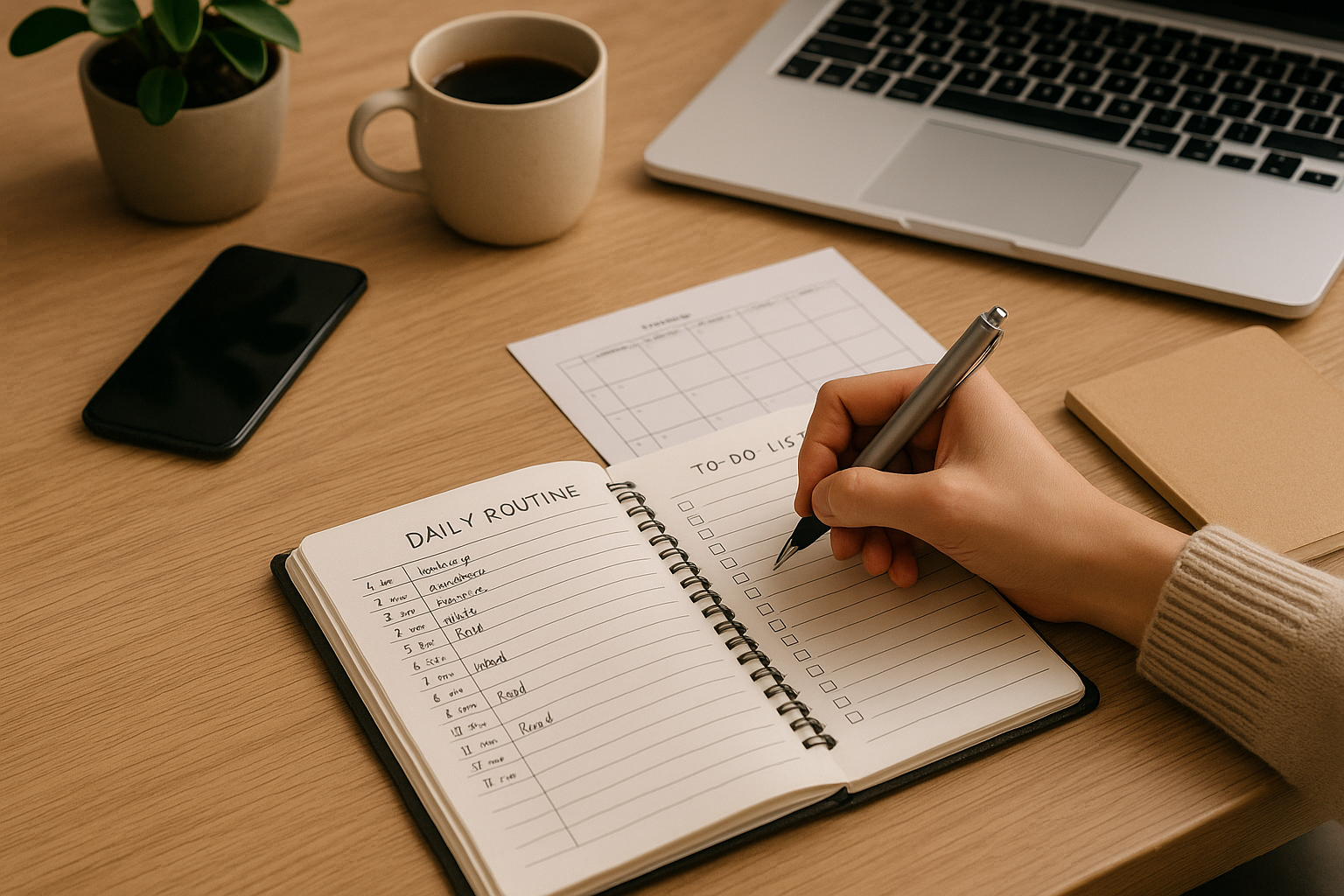Creating a daily routine that truly supports your personal goals and lifestyle can be the turning point between staying stuck and moving forward in life. While routines are often associated with rigidity, the truth is that a good routine is flexible, realistic, and personal. In this article, you’ll learn how to design a daily structure that helps you be more productive, reduce stress, and feel more in control of your time.
Why a Routine Matters More Than You Think
A routine is more than just a set of tasks. It provides a foundation for consistency and a way to build habits that support your mental, emotional, and physical well-being. Some of the benefits of a strong daily routine include:
- Reduced decision fatigue
- Better time management
- Increased focus and productivity
- Improved sleep and energy levels
- Reduced stress and anxiety
- Stronger sense of purpose and direction
Whether you’re looking to achieve a personal goal, improve your mental health, or just feel more organized, building a personalized routine is a powerful step.
Step 1: Understand Your Priorities
Before designing your routine, you need to identify what actually matters to you. Ask yourself:
- What are my top 3 personal goals right now?
- What areas of my life do I want to improve? (e.g., fitness, learning, relaxation)
- When do I feel most focused and energetic during the day?
Your routine should reflect these priorities. For example, if your goal is to improve your physical health, scheduling workouts and healthy meals should be part of your core structure.
Step 2: Map Out Your Current Time Usage
Spend a day or two tracking how you spend your time. Use your phone, a notebook, or a time-tracking app. Be honest and detailed.
You might discover that you spend:
- 2+ hours on social media
- 1 hour deciding what to eat
- 3+ hours watching videos or series
This insight gives you a clear idea of where time is being wasted or mismanaged, and helps you identify spaces in your day that could be used more intentionally.
Step 3: Define the Building Blocks of Your Routine
Now it’s time to design the key elements of your daily structure. Start by dividing your day into blocks that fit your lifestyle.
Morning Routine (Start strong)
- Wake up at a consistent time
- Drink water
- Quick meditation or journaling
- Light physical activity or stretching
- Review goals or intentions for the day
Work/Study Time (High focus zone)
- Schedule deep work sessions (with breaks)
- Set specific goals for each session
- Avoid multitasking and social media during this time
Midday Reset (Recharge)
- Take a proper lunch break
- Go for a short walk
- Breathe, rest your eyes, and reset your mind
Evening Routine (Wind down)
- Prepare dinner or eat something light
- Limit screen time 1–2 hours before bed
- Journal or reflect on the day
- Read a book or do something relaxing
- Sleep at the same time every night
Step 4: Avoid Overloading Your Schedule
Many people fail with routines because they try to do too much. Instead, focus on:
- 2 or 3 key tasks per day
- Setting realistic goals
- Allowing flexibility for unexpected events
A good routine should serve you, not stress you out. Leave space for rest and spontaneity.
Step 5: Use Tools to Stay on Track
There are many digital and physical tools that can help you stay consistent:
- Time-blocking calendars (Google Calendar, Notion)
- To-do list apps (Todoist, TickTick)
- Habit trackers (Habitica, Loop Habit Tracker)
- Printable planners
Choose the ones that feel intuitive to you. Don’t overcomplicate it—simplicity is key.
Step 6: Track, Adjust, and Improve
A daily routine is not something you create once and forget. It needs ongoing improvement. Take a few minutes each week to reflect:
- What worked well?
- What felt forced or stressful?
- What needs to change?
Use this feedback to refine your routine. Maybe you need to shift your workout to the afternoon or reduce your to-do list. This is part of the process.
Common Mistakes to Avoid
- Copying someone else’s routine entirely – What works for others may not work for you. Use others as inspiration, but adapt to your reality.
- Being too rigid – Life is unpredictable. A flexible mindset prevents frustration when things don’t go exactly as planned.
- Trying to do everything at once – Introduce changes gradually. Focus on building one habit at a time.
- Neglecting rest – Productivity is not just about doing more—it’s also about recovering properly.
The Real Secret to Long-Term Success
The secret isn’t the perfect schedule—it’s consistency and self-compassion. Your routine will evolve over time, and that’s a good thing. What matters most is showing up for yourself each day, even when it’s imperfect.
Start Today, One Step at a Time
Creating a daily routine that works for you doesn’t require a complete life overhaul. Start small. Choose one habit or time block to implement tomorrow. As you begin to feel the benefits, motivation will naturally increase.
Your future self will thank you.
